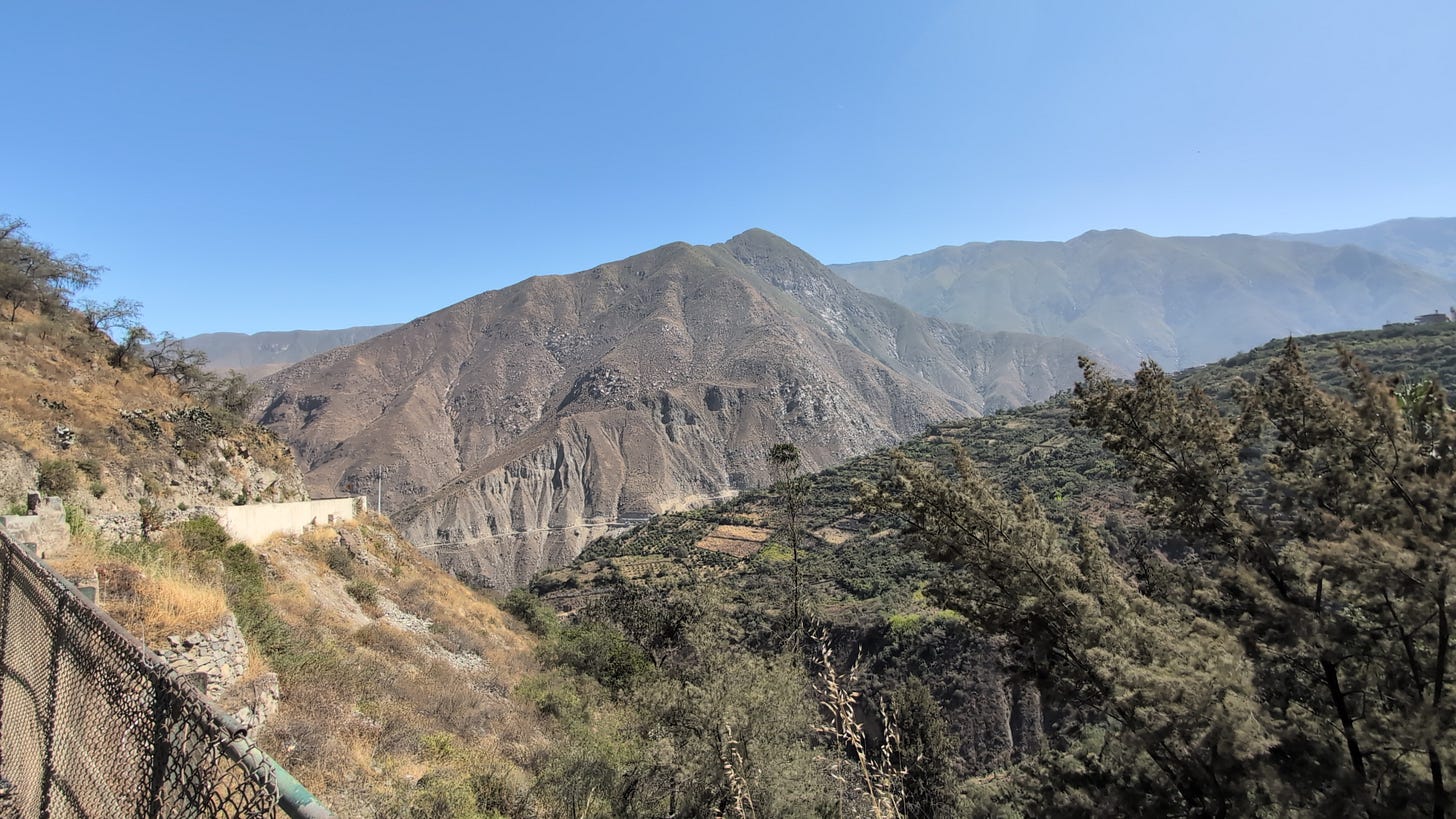Climbing to Callahuanca
A mountain town, a sweet fruit, and a view worth the climb
Today was an unexpected detour and treat. After seeing Chosica, Tara asked to see the local waterfalls. Those were lovely, but for me the amazing success was driving up to Callahuanca. Not only is the drive breathtaking, the town itself is a mystery. I truly thought we were just driving to some hiking trails. I did not realize we were driving to an actual town.
I was also surprised by something else. I was not feeling sick at all, something I had fully expected on a mountain road like this. My Dramamine, Sea-Bands, gum, and an open window were working. It made the journey not just bearable, but enjoyable.
Callahuanca is incredibly quaint, a small mountain town known for its fruit orchards and peaceful charm. We stopped for ice cream soon after arriving. I chose a mix of chirimoya and blueberry. I did not realize at the time what a chirimoya was, but I was about to find out. Gabriela insisted that we try one. She led us to a small shop where the vendor sliced open a ripe chirimoya and handed us spoons. The fruit was soft and creamy, almost custard-like. We sat and enjoyed it slowly, taking in the quiet charm of the town around us.
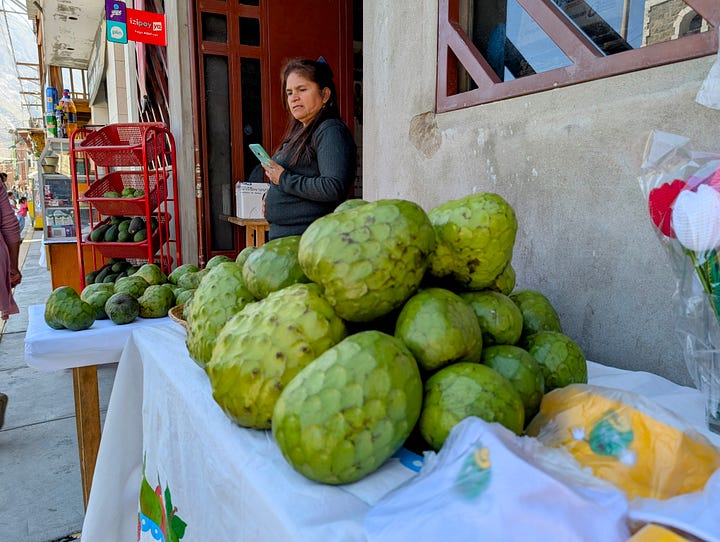
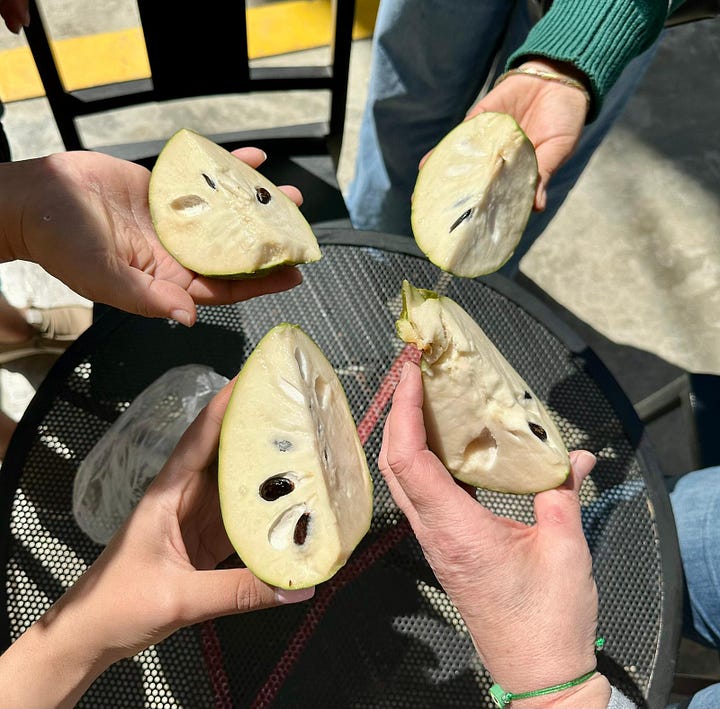
Chirimoyas are a local specialty here. The growing season typically runs from February to May, though in the cooler mountain climate of Callahuanca, it can stretch a bit longer. The fruit grows on steep sidehills, in neat rows carved into the landscape. Someone is out there tending that land, by hand, on rugged terrain. It is hard work, but it is also a way of life, and from what I could see, a beautiful one.
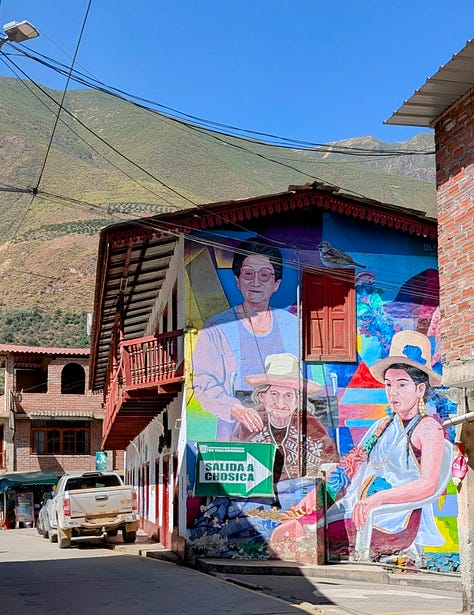
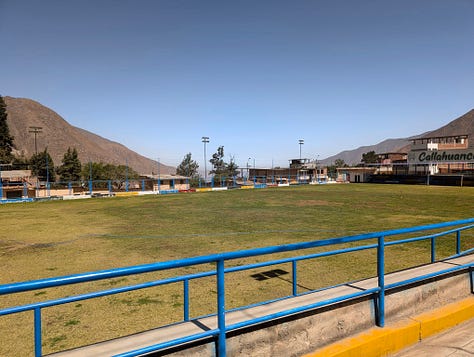
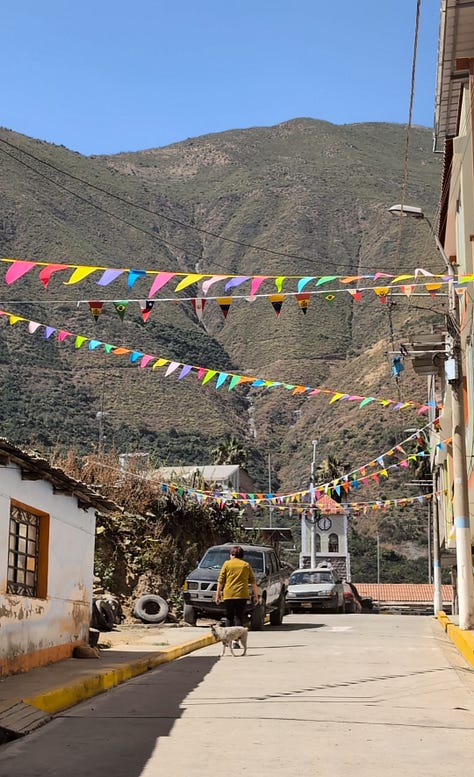
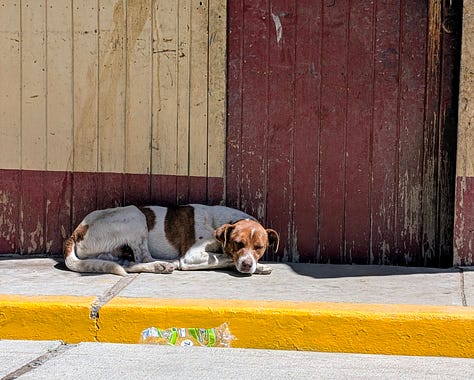
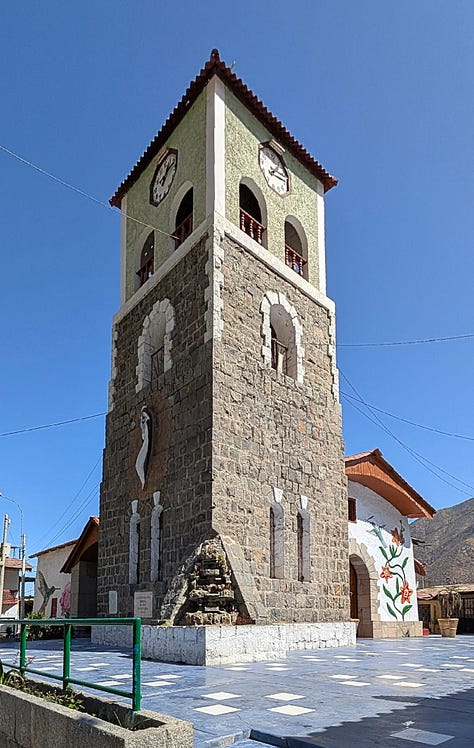
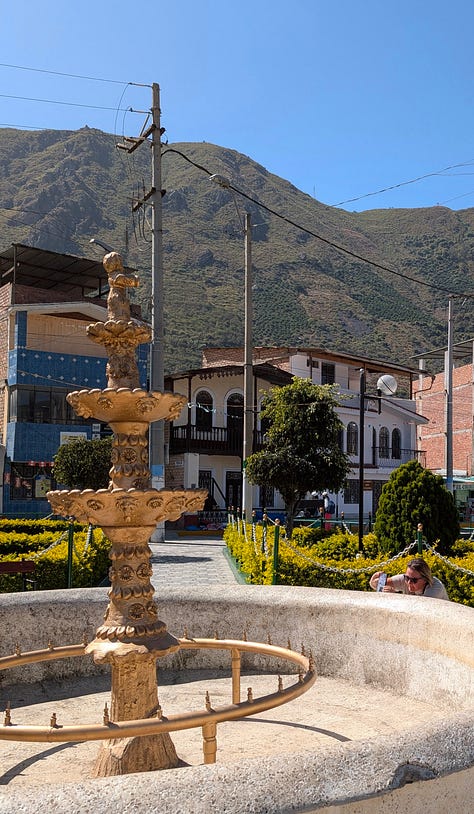


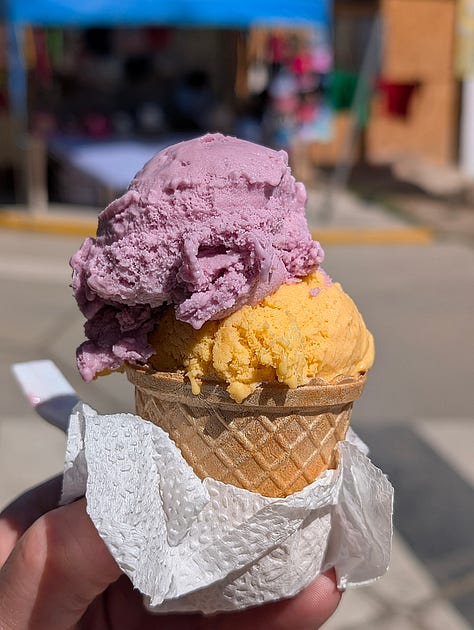
The town itself had cobbled paths, colorful walls, and a quiet pace. What surprised me most was the town itself. I had expected a scenic overlook or a small market. Instead, we found a full town with homes, a church, a school, restaurants, and small vendors lining the road. There was a sense of community and pride in the place that I had not anticipated.
Since we had made it that far, Maribel suggested going a little farther to a place called Moyalán. I only knew it had something to do with a hand and a great view. My thrifted mom Skechers had no idea what they were in for. The trail up to Moyalán was a steady climb. It wound back and forth with a mix of dirt and rock pathways, often shaded by trees. A stone wall lined most of the route, guiding us as we made our way higher. Gabriela had me beat though. She did the hike in stylish black heels, thinking we were sticking to city tours that day.
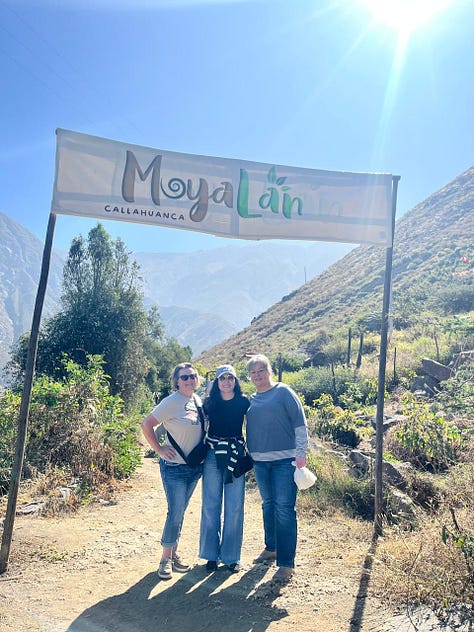

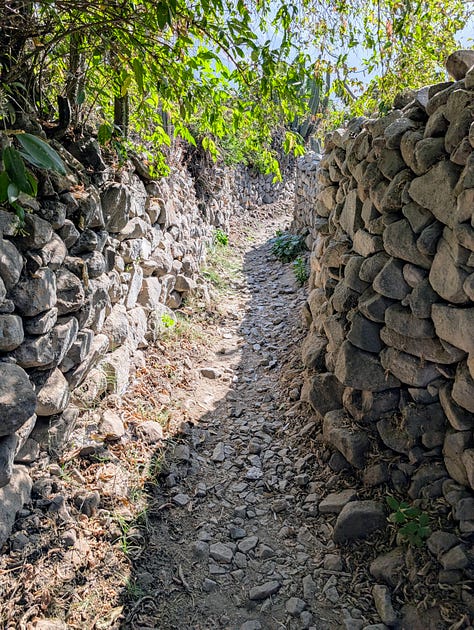
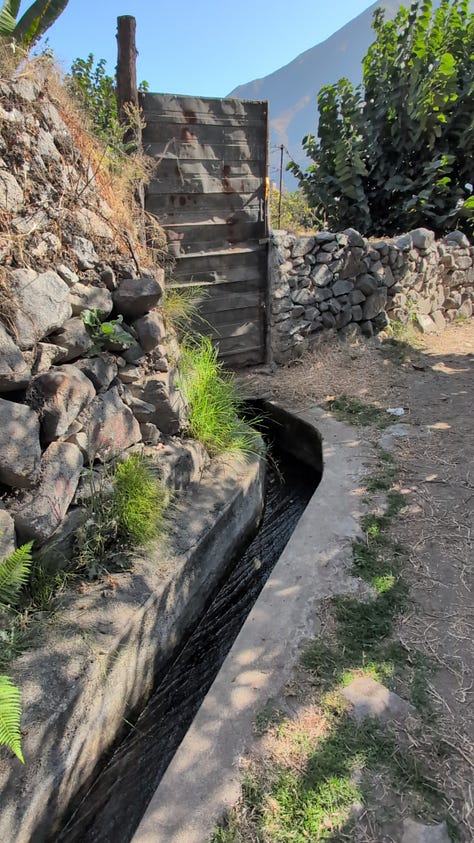
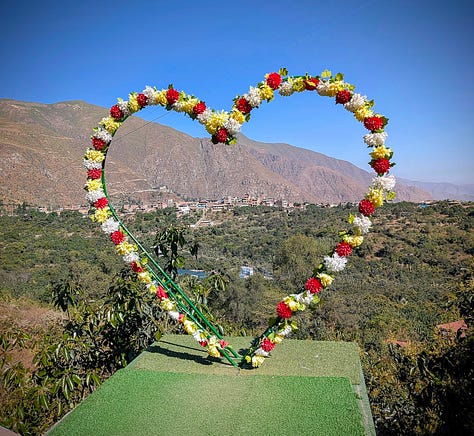
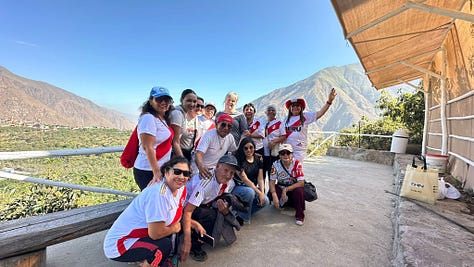
The most embarrassing moment for me came at the creek crossing. I hesitated, thinking I might just wait behind, until another tourist mentioned that someone in their group was over 80 and had already crossed it. I rolled my eyes and navigated across as if I were an elephant balancing on a ball in the circus. One careful step at a time, I made it over. It was a long climb, and I was completely out of breath by the time we reached the top. I am so glad I crossed that creek. I am glad I gasped my way up the mountain. Moyalán delivered exactly what was promised: a stunning view, a sense of accomplishment, and the reminder that sometimes the best experiences come after a little discomfort and some effort.
The other party had paused along the trail to take photos while we continued our climb. Once we reached the top, they arrived shortly after us. They were a joyful bunch, chatting and laughing together, even though I could not understand what they were saying. Before we left, they asked to take a group photo with "the tourists," which cracked me up.
They have clearly built something special with agri-tourism. Chirimoyas and avocados seem to be the heart of it all, and I imagine many people make the trip just to enjoy them fresh from the source. When you look at photos of the area, pay attention to the rows etched into the sidehills. That is where the produce grows. Someone is out there tending that land every day.
Curious about how long people have lived here, I looked into the history of Callahuanca. From my research, people have likely lived in the area for hundreds of years, dating back to pre-Columbian times. Indigenous communities originally settled in the Santa Eulalia Valley because of its rich soil, reliable water sources, and ideal climate for agriculture. During the Inca and later Spanish colonial periods, the land continued to be cultivated. Traces of that agricultural history are still visible today in the terraced hillsides and traditional farming practices. Although Callahuanca was officially established as a district in 1952, the rhythms of life here have long been tied to the land. The cultivation of fruits like chirimoyas and avocados is not a recent development, but part of a deep, ongoing relationship between people and place.
They are clearly proud of their land and are determined to make a go of it. There were craft vendors, ice cream stands, and restaurants, but it was not just a place for tourists. It was clearly a functioning community. As we walked back, I noticed a woman washing clothes or dishes in her open-air kitchen. Newly washed laundry was hanging from a line above her head. I wished I could have seen her home. Her view overlooked the trail to Moyalán.
That day reminded me that growth often happens when you step outside what is familiar, say yes to the detour, and stay open to the people and places that challenge your assumptions in the most surprising ways.


